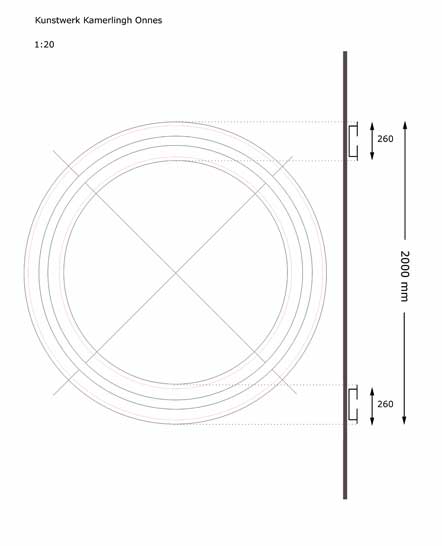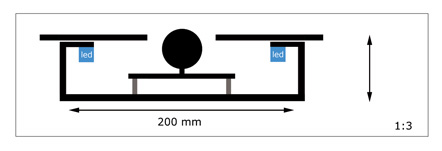DUTCH
A MONUMENT FOR KAMERLINGH ONNES
Commissioned by the University of Leiden
2005
Implemented
The Kamerlingh Onnes Building at the Faculty of Law When developing this
monument I consciously opted for the form of refrigeration that was invented
by Kamerlingh Onnes; this consists of pressurised liquid gas vapours.
The sculpture consists of a circular, stainless steel form that has a
diameter of two metres. It contains a smaller tube, which is filled with
cold glycol. This ice circle is illuminated by blue LED lighting, which
creates a large, round ‘O’ that refers not only to absolute
zero but also to Onnes’ name.
A memorial plaque has been placed beneath the circle.
Further information:
The vapour from the air condenses on the refrigerated copper circle and
will, depending on the environment’s temperature, increase to a
maximum of 0,5 centimetres.
The refrigeration system is designed in such a way that the ice ring will
regularly thaw and refreeze. This will rectify any irregularities in the
build-up of ice.
This particular site was selected for the artwork because it used to be
the location of Kamerlingh Onnes’ laboratory.
Kamerlingh
Onnes’ biography
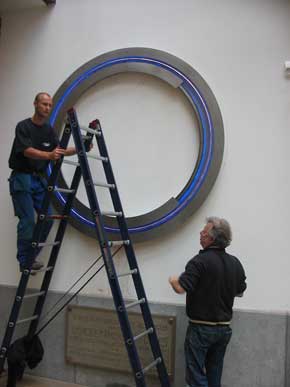
Paul Dekker (Frost klimaattechniek.) en Jaap Hoogerdijk installing the
work.
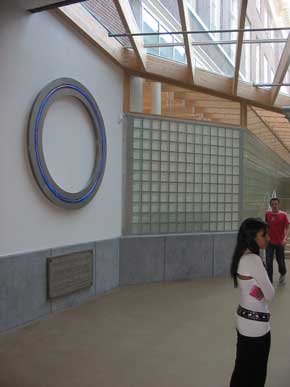
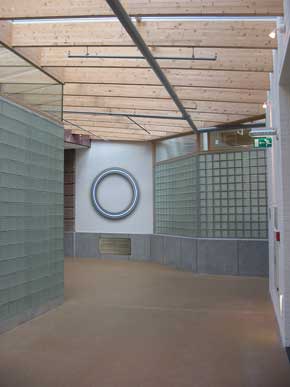
artist impression
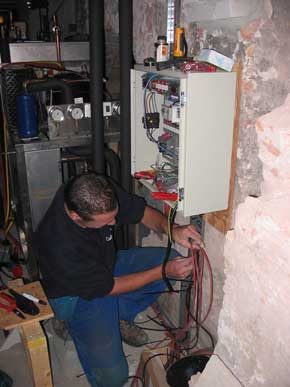
Installing equippement by Frost klimaattechniek.
The cryogenic temperature range has been defined as from -150 celcius
(-238 fahrenheit) to absolute zero (-273 celcius or -460 fahrenheit),
the temperature at which molecular motion comes as close as theoretically
possible to ceasing completely. Cryogenic temperatures are usually described
in the absolute or Kelvin scale in which absolute zero is written.
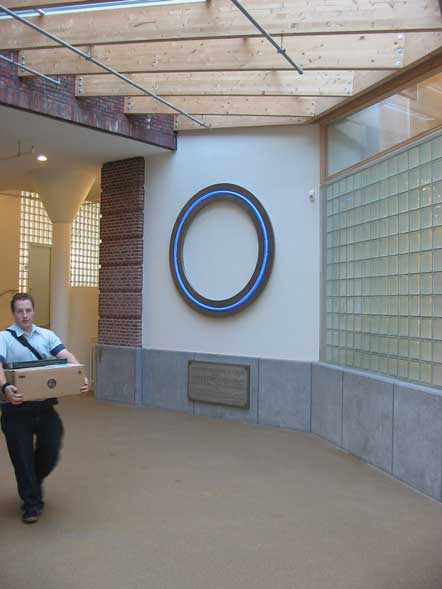
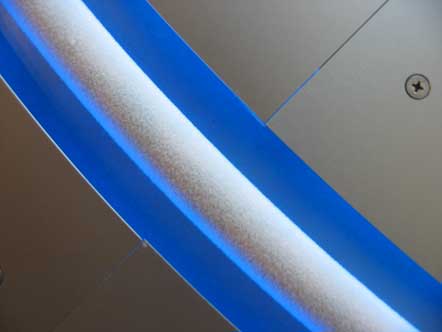
details
build-up of ice, and lighting.
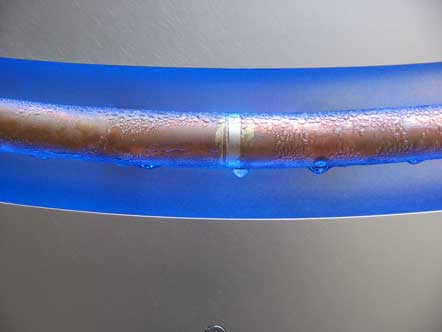
detail
thaw
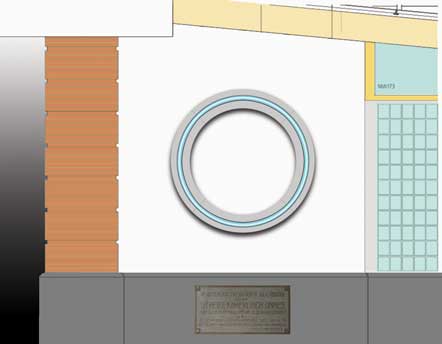
artist
impression
